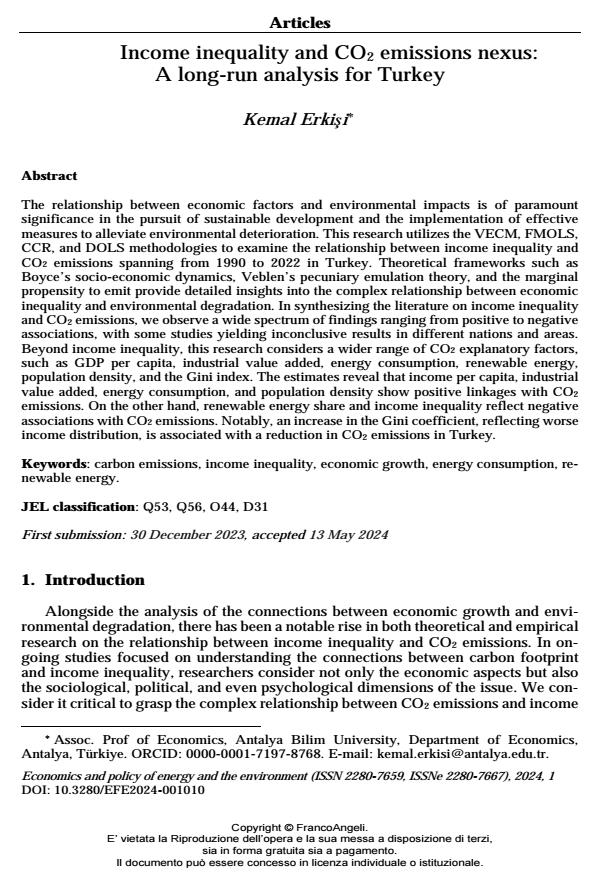Income inequality and CO2 emissions nexus: A long-run analysis for Turkey
Titolo Rivista ECONOMICS AND POLICY OF ENERGY AND THE ENVIRONMENT
Autori/Curatori Kemal Erkisi
Anno di pubblicazione 2024 Fascicolo 2024/1
Lingua Inglese Numero pagine 21 P. 171-191 Dimensione file 319 KB
DOI 10.3280/EFE2024-001010
Il DOI è il codice a barre della proprietà intellettuale: per saperne di più
clicca qui
Qui sotto puoi vedere in anteprima la prima pagina di questo articolo.
Se questo articolo ti interessa, lo puoi acquistare (e scaricare in formato pdf) seguendo le facili indicazioni per acquistare il download credit. Acquista Download Credits per scaricare questo Articolo in formato PDF

FrancoAngeli è membro della Publishers International Linking Association, Inc (PILA)associazione indipendente e non profit per facilitare (attraverso i servizi tecnologici implementati da CrossRef.org) l’accesso degli studiosi ai contenuti digitali nelle pubblicazioni professionali e scientifiche
The relationship between economic factors and environmental impacts is of paramount significance in the pursuit of sustainable development and the implementation of effective measures to alleviate environmental deterioration. This research utilizes the VECM, FMOLS, CCR, and DOLS methodologies to examine the relationship between income inequality and CO2 emissions spanning from 1990 to 2022 in Turkey. Theoretical frameworks such as Boyce’s socio-economic dynamics, Veblen’s pecuniary emulation theory, and the marginal propensity to emit provide detailed insights into the complex relationship between economic inequality and environmental degradation. In synthesizing the literature on income inequality and CO2 emissions, we observe a wide spectrum of findings ranging from positive to negative associations, with some studies yielding inconclusive results in different nations and areas. Beyond income inequality, this research considers a wider range of CO2 explanatory factors, such as GDP per capita, industrial value added, energy consumption, renewable energy, population density, and the Gini index. The estimates reveal that income per capita, industrial value added, energy consumption, and population density show positive linkages with CO2 emissions. On the other hand, renewable energy share and income inequality reflect negative associations with CO2 emissions. Notably, an increase in the Gini coefficient, reflecting worse income distribution, is associated with a reduction in CO2 emissions in Turkey.
Parole chiave:carbon emissions, income inequality, economic growth, energy consumption, renewable energy.
Jel codes:Q53, Q56, O44, D31
Kemal Erkisi, Income inequality and CO2 emissions nexus: A long-run analysis for Turkey in "ECONOMICS AND POLICY OF ENERGY AND THE ENVIRONMENT" 1/2024, pp 171-191, DOI: 10.3280/EFE2024-001010